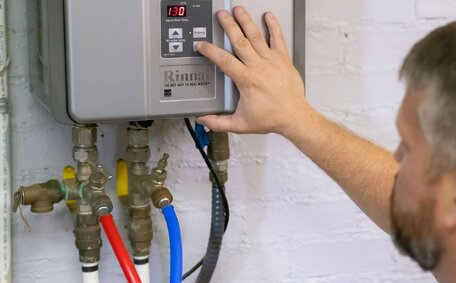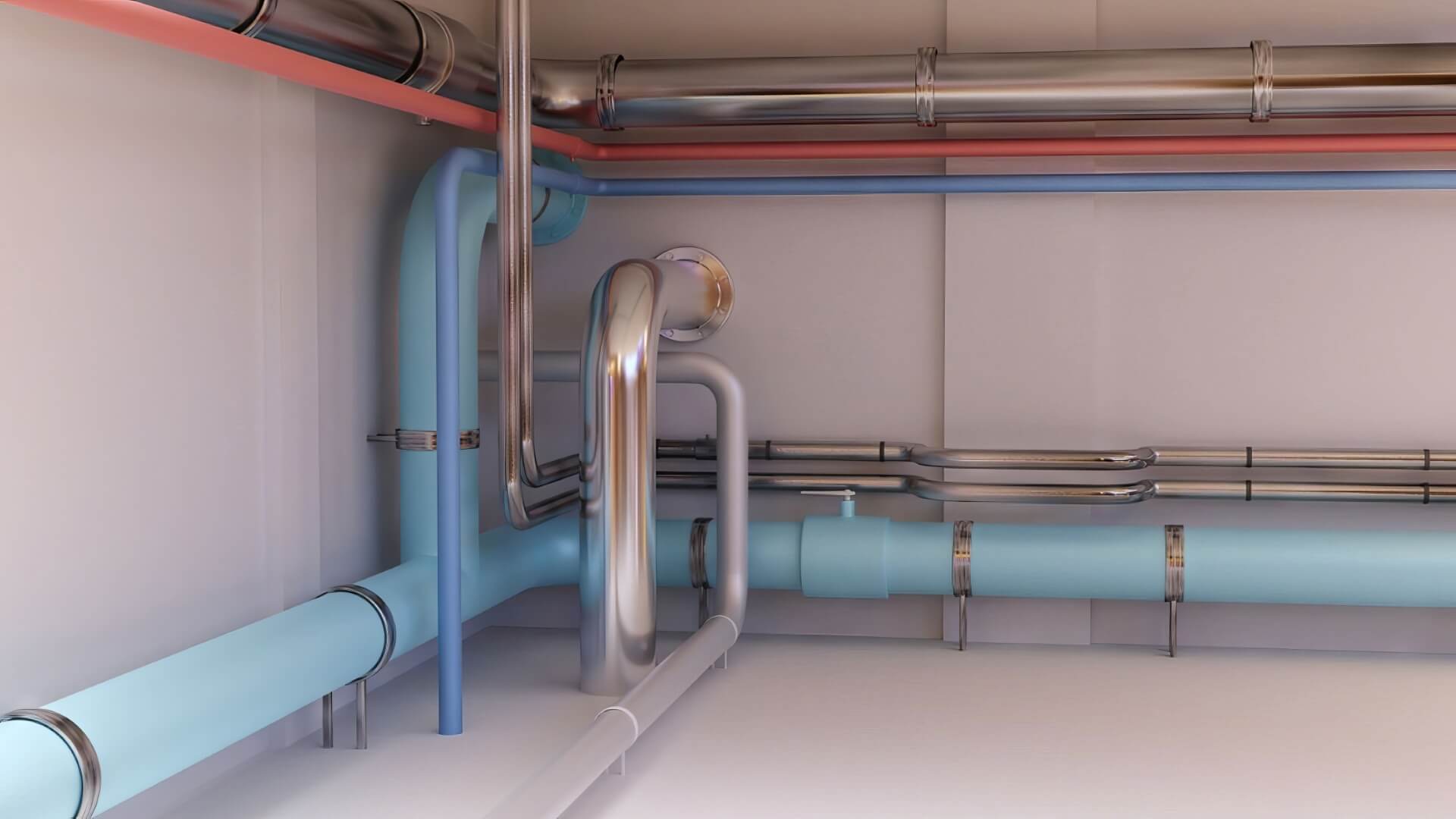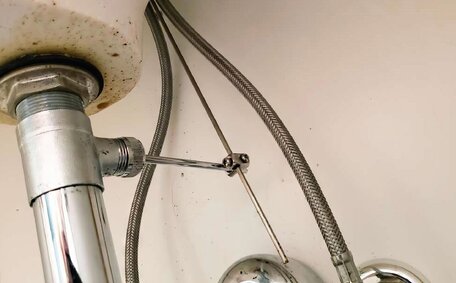Identifying a Water Leak in Your Home
Early detection of water leaks is crucial to prevent extensive damage and minimise water bills. Signs of potential leaks your plumbing system include:
- A sudden spike in your water bill can indicate a hidden leak at home, despite normal usage
- The sound of running water when all taps are turned off, indicating a potential leak.
- Water seeping into areas creating wet patches on walls, floors, or ceilings, signifying interior water damage.
- Low water pressure
- Toilets often conceal leaks, requiring thorough inspection as up to 20% are affected.
To ensure your property remains leak-free, follow these steps to detect potential water leaks using your water meter:
- Check your meter before and after high usage events to spot any inconsistencies
- Examine plumbing fixtures and pipes, including the back toilet, for any indications of drips or harm
- A building format plan used in conjunction with a moisture meter effectively reveals damp patches on walls and floors.
If a leak arises, shut off your water supply immediately, and for insights into effectively managing a leak to safeguard your home, call us for a plumber’s expertise.
Locating the Source of the Leak
To pinpoint the source of a water leak in your home and possibly qualify for a leak allowance, thoroughly inspect gutters, downspouts, water fixtures, and accessible pipes. Pay close attention to areas like kitchens and bathrooms where clogged gutters could contribute to water issues, as well as laundry rooms and outdoor taps.
Inspect around sinks for water encroachment on bases or cabinets, and check floors, and be sure not to overlook your roof, toilets, showers, baths, and laundry appliances for drip or leakage indicators. Also inspect the main water line coming into your house, water heater, pipes under floors, and where pipes run behind walls if inspection is feasible.
To ensure you don’t inadvertently obscure any signs, turn off all taps and use your water meter as a diagnostic tool to check water leaks, carefully watching for any changes, especially on exterior walls. Switch off all taps, monitor the meter, and then turn on each fixture one at a time, looking for meter activity that could signal a leak.
If you suspect a hidden leak, use a moisture meter on walls and floors to quickly identify damp regions and pinpoint a water leak in your home. Enlisting a licensed plumber can help pinpoint hard-to-find leaks using your water systems and sophisticated leak detection equipment.
Once the leak’s origin is determined, shut off the water supply to the specific fixture, if possible. and In the event of a water leak, contact us directly to arrange for a plumber to repair and stop the water flow.
Stopping or Containing the Water Leak
In the event of a major leak, immediately shutting off the water supply is critical to contain potential damage. Commence by finding the control valve also known as the stop tap for the main water supply, and twist it clockwise to block the water flow and prevent water damage your plumbing system might face. This action is for preventive purposes only, typically enacted near your system’s water meter tap or the front external tap.
Place buckets or containers to catch water trickling through the ceilings or floors to manage leaks.. For minor leaks in your systems, you’ll need to employ a faucet or pipe clamp to apply counter-pressure and temporarily stop the leak your pipe while devising repair strategies.
Applying towels or rags with pressure over the leak may reduce water loss until it can be stopped. Insert them securely at the source of the leak to minimise water wastage.
In the event of significant leaks your walls or ceilings face, use a wet/dry sump pump to contain and remove standing water. Inspect for hidden moisture using non-invasive moisture detection metres.
If a leak becomes apparent, quickly call a plumber to prevent minor issues from turning into serious problems. Promptly inform tenants and the body corporate, as the owner responsible fixing such dilemmas; switch off power if necessary.
Mitigating Damage and Preventing Secondary Issues
Following the identification of a leak, take swift action to prevent further damage. Shift prized possessions and furniture from affected areas to facilitate repairs and safeguard your belongings from potential water damage your home may incur. Switch off electricity in areas with water near electrical wiring and lift or remove carpets to aid drying.
Deploy an industrial dehumidifier, fans, or open windows to diminish moist conditions where leaks might lurk. Adopt these preventative measures to protect against long-term issues like mould, peeling paint, and warping floorboards that significantly increase repair costs.
Moisture that slyly infiltrates walls can instigate progressive, structural damage, menacing the edifice’s integrity; professional moisture detection is advised even after leaks are repaired. On average, repairing just a single burst flexi hose can cost upwards of $1,200.
Consult a licenced plumber regarding leak extent, appropriate drying procedures and monitoring at-risk areas of your property over time through regular inspections.
Utilizing Professional Repair Services
For complex plumbing leaks, seek professional help to avoid exacerbating damage with DIY fixes. It is highly recommended to engage licenced professionals; find out more about the sustainable repairs offered by the experts at Glenwood Plumbing.
As specialists with advanced technical knowledge and years of experience, contact us for accurate leak assessment, source location, precise quotes, and lasting repairs with quality materials.
Key benefits of utilising our licenced plumbers include:
- Precision water leak detection services utilising video cameras and advanced moisture meters
- Ability to fully repair damaged pipes, joints, toilet cisterns and more
- Ensuring leaks do not recur through the use of high-quality replacement parts and materials
- Complimentary follow-up inspections to ensure repairs are effective
- Advice on mitigating water damage and drying out affected areas
For emergency service available 24/7 to address residential and commercial leaks rapidly and effectively - contact us directly for immediate aid.
Implementing Preventative Measures
Being proactive about plumbing maintenance can prevent leaks and water damage down the track. Simple acts like scrutinising fixtures for drips, replacing old parts before they fail, and diligently observing for water your utility systems indicate can truly make a marked impact.
Scheduling biennial plumbing inspections with a licensed plumber can help assess pipe conditions, detect early-stage leaks, and recommend upgrades for weak components. Annual servicing of your hot water system is also recommended.
Installation of comprehensive leak detection systems linked to smartphone apps enables oversight and instant notifications to check leaks using your whenever water flow abnormalities are detected. Moisture sensors in leak-prone areas like under sinks and toilets can also provide early warning.
Prompt reporting of small drips or damp areas by tenants facilitates early intervention to prevent significant leaks. Offering frequent reminders about leak risks and providing emergency contact details for plumbing helps enable quick containment.
Proactive maintenance and being alert to wear on plumbing systems are essential in averting significant damage, high utility bills, and health risks associated with unchecked leaks.
Detecting Concealed Leaks
Leakages ensconced within your walls, floors, or subterranean pipes can pose significant detection challenges. Some methods to uncover concealed leaks include:
- Monitoring water usage patterns through metre readings to identify abnormal flows that could indicate a leak.
- Perform regular visual inspections of your entire plumbing systems and devices to identify signs of dampness or damage that can caused severe complications.
- Checking areas around toilets, under sinks, behind washing machines and dishwasher for moisture or water stains.
- Leverage advanced leak detection equipment to check leaks using areas where water might seep through, utilising tools like infrared cameras, acoustic listening devices, and pipe inspection cameras.
- Getting professional assistance from licenced plumbers, who can pinpoint leak locations using specialised tools and extensive experience.
Stay vigilant for signs such as musty odours, rising damp on walls, or warped floorboards, which could indicate problems that no one should overlook. Untreated leak-related moisture build-up can lead to serious issues such as mould growth and structural weakening.
Asking yourself 'what do I need to mitigate water wastage and prevent severe property damage from hidden leaks?' Immediate action becomes essential to stave off damage can undermine the structural durability of your home. Please call a plumber without delay if a leak is suspected yet eludes basic inspection efforts.
Identifying Plumbing Fixtures Prone to Leaking
Some of the most common household water leaks in your plumbing fixtures susceptible to leaking include:
- Taps - Leaking tap occurrences, due to worn washers, loose fittings, and corroded valves, lead to the unnecessary loss of substantial volumes of water.
- Toilets - Faulty mechanisms, insecure connections, and ineffective seals are often culprits behind leaks in your toilet, and A running toilet leak can waste substantial amounts of water if left unchecked.
- Showers & shower heads - Old seals and loose connections at the shower arm and head junction are prone to drips.
- Outdoor taps - Exposure to weather extremes and lack of regular use can lead to leaks at the spindles and fittings.
Be vigilant for indications of leaks, such as water seeping around fixtures, stains on fixtures from using water, or visible dampness in your garden. Seemingly minor drips, if not resolved quickly, can amount to litres water thoughtlessly lost over time.
Adopt a routine of regularly inspecting fixtures so when leak signs appear, you can arrange for plumbing maintenance at least annually. Replacing worn parts before failure occurs is key to preventing catastrophic leaks down the track.
Utilizing Moisture Meters and Leak Detection Systems
Advanced tools such as moisture meters and comprehensive detection systems are crucial as leaks often persist undetected within home systems.
Moisture meters use technologies such as electromagnetic wave sensors to measure the moisture levels in your building materials. Handheld models can conduct thorough scans within homes, assessing walls, floors, and ceilings for elevated moisture that might suggest water damage.
Wireless systems proactively monitor your dwelling, issuing alerts about any water leaks to watch out for your domain through real-time monitoring. Tracking devices on the pipes run continuous checks on water flow rates, promptly alerting homeowners to abnormalities which might indicate a burst pipe or compromised hose.
Smart home devices can pinpoint leaks down to the specific fixture and instantly shut off water to prevent flooding. Continuous monitoring is crucial for detecting minor leaks that can cause substantial water damage in homes.
Proactive steps are crucial in minimising repair costs and protecting your home from damage due to moisture-related issues. While moisture metres and leak detectors require an initial investment, over the long term they can potentially save thousands in leak damage and wasted water.






